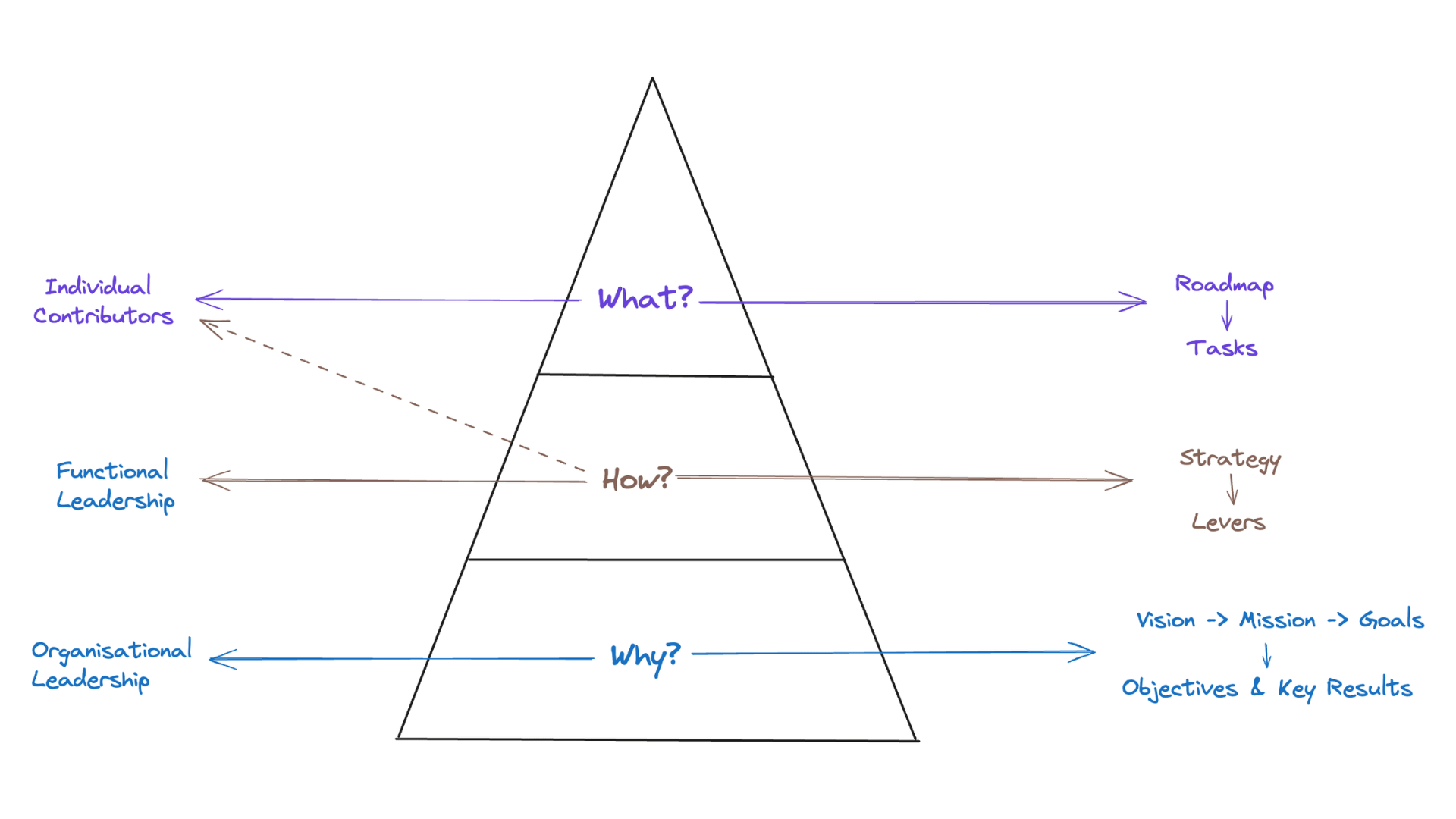How do Different Organizational Levels Contribute to Growth Planning?
Building on our understanding of the OKR framework, this concept examines how different organizational levels contribute to growth planning, ensuring that goals are coherent and aligned across the company.

Founders and Visionary Goals:
Founders (or executive leadership) in startups typically set the overarching goals that align with the company's vision and mission. Even more importantly, they contribute through prioritization of those goals, and making strategic trade-offs.
For example, founders might opt to prioritize the goal of cost efficiency over the goal of increasing market share in the upcoming quarter, to align with overall objective of becoming a sustainably growing business.
Leadership and Strategic Roadmaps:
Leadership teams are typically tasked with developing specific, actionable steps to achieve these goals.
They plan improvements in operational processes, such as optimizing the checkout process to boost conversion rates or exploring new distribution channels to increase market penetration.
Individual Contributors and Tactical Execution:
Individual contributors bring invaluable ground-level insights to the strategic framework. Their proposals are directly shaped by and contribute to the organization’s strategic goals.
For instance, a content writer on the growth team might propose an A/B test on email copy aimed at improving click rates. This initiative supports the broader strategy of using win-back campaigns for churned users, aligning with the cost-efficiency goal prioritized over new customer acquisitions.
Reconciling Top-Down and Bottom-Up Initiatives:
The final growth roadmap emerges from merging top-down objectives with bottom-up innovative ideas, creating a robust strategy that aligns with both visionary goals and practical implementations.
An example of this would be adopting the marketing team’s proposal to bundle products, enhancing the strategic goal of increasing average order value.
Takeaway:
Founders set strategic priorities that shape the company's vision into achievable goals. Leadership teams create detailed roadmaps to implement these strategies through operational excellence, while individual contributors offer ground-level innovations that directly support and enhance strategic goals.
The integration of these ideas forms a comprehensive growth plan that is both visionary and pragmatically achievable, ensuring all levels of the organization contribute effectively to its growth.